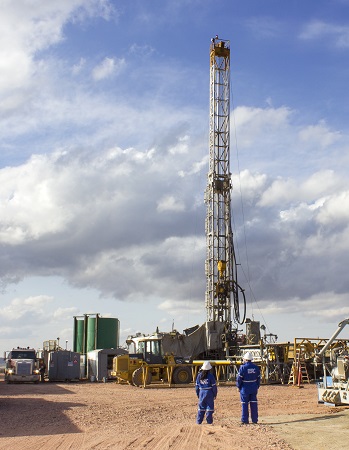EERC secures $10M in grants
UND center to investigate feasibility of carbon dioxide capture and underground storage

UND’s Energy & Environmental Research Center is in elite company.
It recently received an $8.8 million grant to investigate the feasibility of storing carbon dioxide (CO2) emissions underground.
“We’re one of just three such feasibility projects awarded in the United States,” said Wes Peck, principal geologist and Geosciences Group Lead at the EERC.
The EERC also received a $1.2 million grant to conduct a pre-feasibility study focused on the capture and storage of CO2 emissions in Nebraska.
Together, the grants total $10 million, and are part of $44 million awarded by the U.S. Department of Energy (DOE) through the Carbon Storage Assurance Facility Enterprise (CarbonSAFE) initiative. The goal is to help mitigate CO2 emissions from the burning of fossil fuels.
“This is a great opportunity for UND and the EERC,” said Peck. “The projects will benefit the state and the region.”
Coal production is one of North Dakota’s largest industries, and about 30 million tons of lignite are mined each year. With one of the largest reserves of lignite in the world, there is enough coal to produce energy for 835 years, according to the Bismarck State College Energy Center for Excellence.
Burning coal to fuel power plants and other industrial activities emits CO2, and the nation has long been seeking ways to mitigate the problem.
Underground storage
One idea is to capture the carbon and store it underground. Is it feasible? That’s what the DOE wants to find out.
EERC researchers will investigate the feasibility of capturing emissions from coal-fired plants, compressing the CO2, and injecting it a mile deep underground. One of the most promising sites is the Broom Creek Formation in Oliver and Mercer Counties in central North Dakota.
If viable, the site could eventually store 2 million metric tons of CO2 per year for 25 years — a total of 50 million metric tons that would not be emitted into the atmosphere.
“There is no oil there,” said Peck, “and it’s not used for any other resources.” The water in the rock formation, he added, is saltier than that in the ocean and well below any potential drinking water.
A major aspect of this project is to acquire new geologic information about the Broom Creek Formation. This will include drilling two exploratory wells into the formation to gather rock samples.
“Drilling the holes will be relatively easy compared to most drilling in western North Dakota, said Peck. “Bakken drillers go 10,000 feet down and 10,000 feet horizontally,” he said. “We’re only going 5,800 feet down. They’ll use a smaller rig.”
The project will not actually inject any CO2 into the formation; it will just examine the feasibility of the project and the site. If the results are promising, more research will be done.
The pre-feasibility study being conducted in Nebraska will investigate the deep geologic storage opportunities for CO2 emissions from the coal-fired Nebraska Public Power District’s Gerald Gentleman Station, about 300 miles west of Omaha.
Working together
The EERC has a long history of working well with DOE, said Peck. Their work on clean coal-burning technology and geologic storage of CO2 has resulted in great working relationships with federal agencies, industry, and others.
“We have a compelling story. We have a great team at the Center, with experience working on other DOE projects,” he said. “We have a great working relationship with energy industries in the state.”


